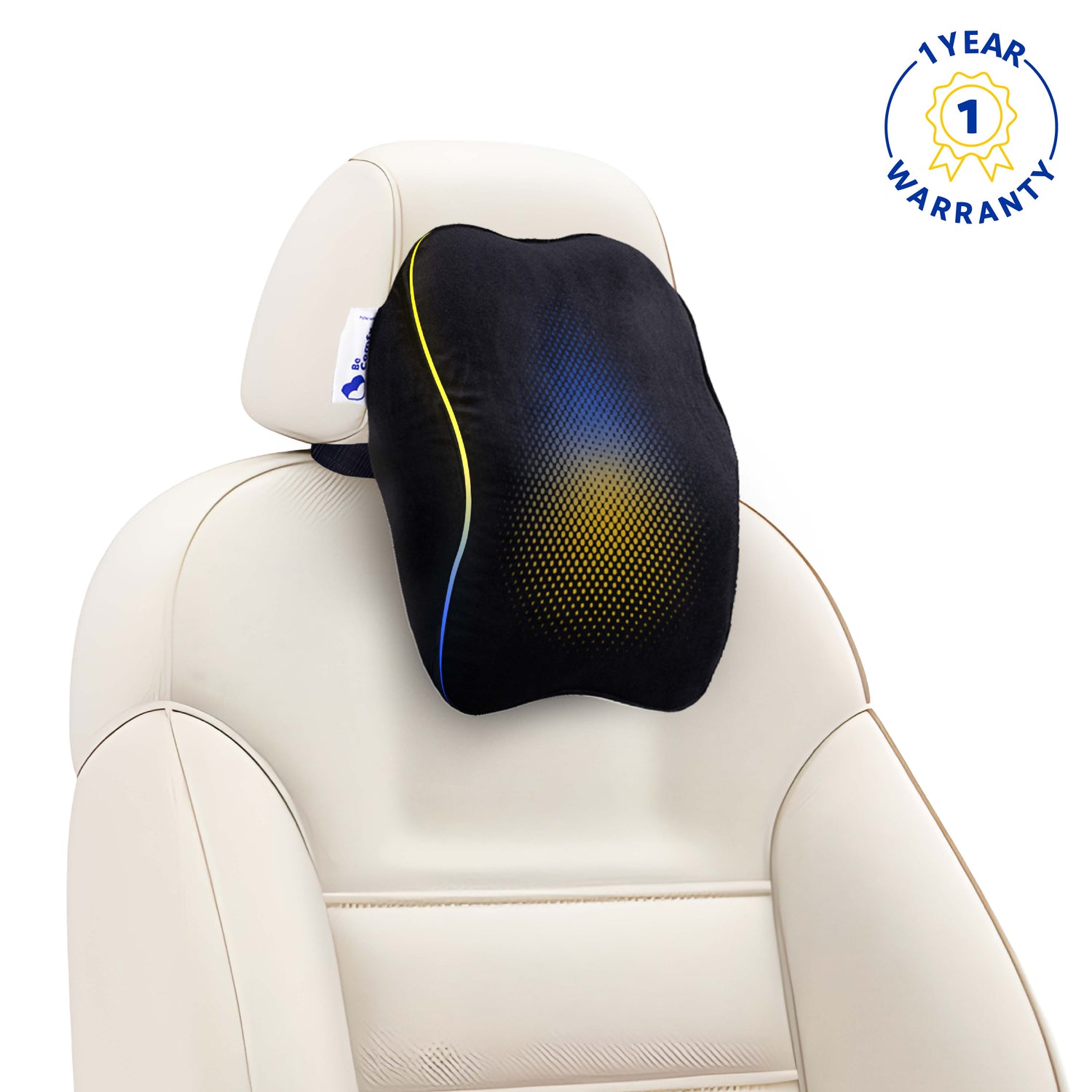Decoding Lumbar Support: The Science Behind How It Protects Your Spine
Share
We hear the term "lumbar support" frequently, especially when discussing office chairs, car seats, or back cushions. Ergonomists emphasize its importance for preventing chronic back pain and promoting overall spinal health. But what exactly is lumbar support, and what's the science behind how it actually works to protect your spine, particularly during those long hours of sitting?
Understanding this mechanism is key to appreciating why prioritizing lumbar support is crucial for anyone who spends significant time seated. Let's decode the science.
Understanding Your Lumbar Spine
The lumbar region refers to the lower part of your spine, typically consisting of five large vertebrae. This section bears a significant portion of your body's weight and is crucial for movement and balance. Naturally, the lumbar spine curves slightly inward, towards your belly. This gentle inward curve is known as the lordotic curve or lumbar lordosis.
This curve isn't just incidental; it's vital for:
-
Distributing Weight: It helps evenly distribute body weight and mechanical stress across the spine.
-
Absorbing Shock: It acts like a natural spring, absorbing shocks from walking, running, or lifting.
- Maintaining Balance and Posture: It's fundamental to maintaining an upright, balanced posture.
The Problem: Sitting vs. Your Spine's Natural Curve
When we stand, maintaining this natural lumbar curve is relatively straightforward. However, sitting, especially for prolonged periods on unsupportive surfaces (like standard chairs or even bean bags), poses a challenge.
Without adequate support, the tendency is to slouch. This slouching causes the lumbar spine's natural inward curve to flatten, or even reverse into an outward curve (kyphosis). This unnatural alignment leads to several problems:
-
Increased Disc Pressure: The pressure on the intervertebral discs (the cushions between your vertebrae) increases significantly.
-
Muscle Strain: Back muscles and ligaments are put under additional stress as they try to compensate for the poor posture.
-
Nerve Irritation: Increased pressure can potentially irritate or pinch nerves exiting the spinal column in the lower back.
- Pain and Discomfort: Over time, this accumulated strain manifests as lower back pain, stiffness, and general discomfort.
How Lumbar Support Intervenes: The Science of Protection
Effective lumbar support works by counteracting the spine's tendency to flatten during sitting. It essentially provides external reinforcement to help maintain the natural lordotic curve.
Here's the breakdown of how it protects your spine:
-
Maintains the Natural Curve: A well-designed lumbar support (whether built into a chair or provided by a cushion) fills the gap between your lower back and the chair backrest. It physically supports the inward curve, preventing it from flattening or reversing.
-
Promotes Correct Posture: By supporting the natural curve, it encourages you to sit more upright, aligning your head, shoulders, and hips, and actively discouraging slouching.
-
Reduces Spinal Load: Maintaining the natural curve helps distribute pressure more evenly across the vertebrae and discs, reducing the concentrated stress on the lower back structures.
-
Alleviates Muscle Strain: With the spine properly supported, back muscles don't have to work as hard to maintain posture, reducing fatigue and tension.
- Minimizes Nerve Pressure: By promoting better alignment and reducing disc pressure, lumbar support can help alleviate pressure on spinal nerves, potentially reducing pain that radiates, like sciatica symptoms.
The Role of Ergonomic Design and Materials
Modern lumbar supports, like the BeComfy Back Support, often utilize ergonomic principles and advanced materials to enhance this protective function.
-
Ergonomic Contouring: The shape is specifically designed to match the average spinal curve, providing targeted support where it's needed most.
- Memory Foam: Materials like premium memory foam mold to your individual back shape, offering personalized support and superior pressure distribution compared to standard foam. This adaptability ensures the support feels comfortable yet firm.
Conclusion: Support Your Spine, Support Your Health
The science is clear: lumbar support isn't just about comfort; it's about actively protecting the biomechanics of your spine during prolonged sitting. By maintaining the natural lordotic curve, it reduces harmful stress on discs, muscles, and nerves, preventing pain and promoting better long-term spinal health.
Whether through an adjustable feature on an ergonomic chair or a well-designed cushion like the BeComfy Back Support , ensuring your lower back is properly supported is a fundamental aspect of creating a healthy and productive workspace. Don't underestimate the power of supporting that natural curve – your spine depends on it.

